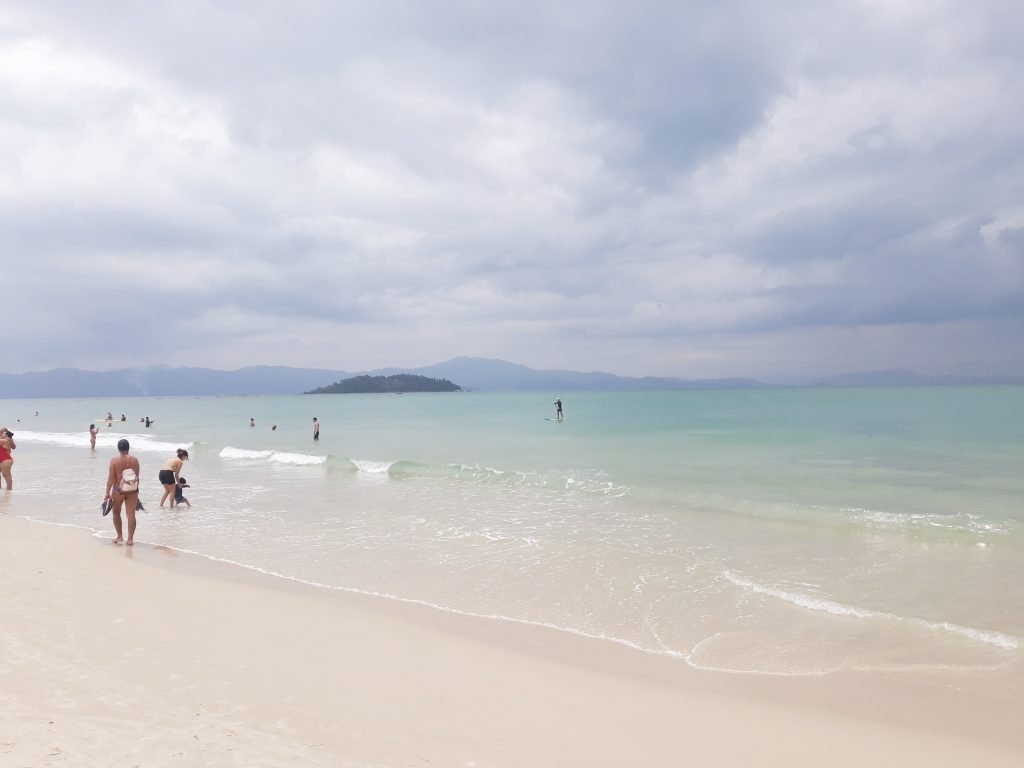Stop.
Before you reject Brazil as too dangerous for retirement, I have something to tell you.
Five cities – safer than where you live now and with less crime than an American suburb.
With healthcare that rivals European standards
and your entire monthly budget stays under US$1000
Today I will completely shatter every stereotype about Brazil – the country where I came from.
And that idea might sound weird, because not long ago, I warned all of you to NOT retire in Brazil.
The crime statistics, the healthcare concerns, the language barrier – it all seemed too risky.
But the 5 cities you will discover today – they are exceptions. They offer everything retirees want: safety, excellent healthcare, and great quality of life for prices so low you will not believe the numbers. One of them is even known as “the Magic Island”!
These aren’t tourist traps or remote villages – They’re sophisticated cities with thriving expat communities that most people completely ignore.
Among the 5,571 cities of Brazil, I selected these five based on six crucial factors that matter most to retirees: safety, healthcare, cost of living, connectivity, community, and quality of life. These factors not only enhance the overall experience of living in Brazil, but they also position it as one of the most affordable countries for retirees today.
We start with a city that you probably have never heard about, and you will not believe how stunning it looks!
São Sebastião
São Sebastião sits on São Paulo’s southeast coast with a population of 90,000 residents. It features long stretches of stunning beaches, mountains covered in Atlantic rainforest, and colonial buildings. The Maresias district alone attracts visitors from across South America for surfing competitions and beach culture.
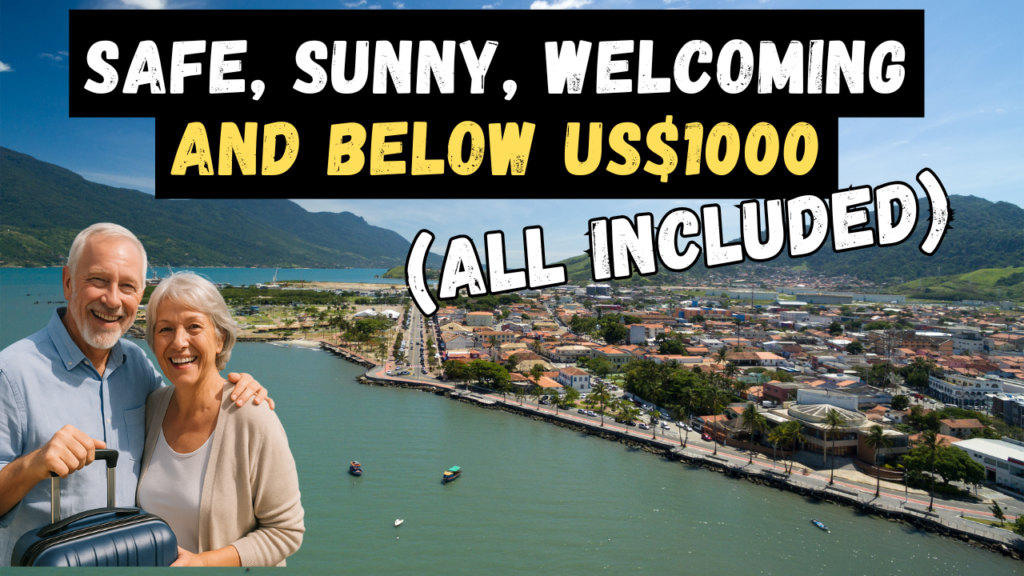
Also, São Sebastião, while in São Paulo state, is also not far from Rio. In fact, it is the closest city to Rio in this list.
And no, I no, there are no cities from Rio state in this angry, which will result in some angry comments from Cariocas, but I have good reasons for that.
The weather stays comfortable year-round, with summers hitting 31.1°C and winters never dropping below 17.2°C. Ocean breezes make even the hottest days bearable, and humidity is manageable due to its coastal location. December through March brings the warmest temperatures, while June through August offers cooler mornings perfect for beach walks without the crowds.

Your monthly budget of $1000 goes far here. A decent oceanview rental costs around $450 to $600 per month, local meals are $5 to $8, and transportation costs are low. Local markets sell fresh fish caught that morning, tropical fruits from nearby farms, and vegetables.
Here’s a curiosity: in a city close to São Sebastião, called Bertioga, the Nazi doctor Josef Mengele hid and died, drowned in the sea. This war criminal lived quietly on the Brazilian coast for decades.
Here’s where things get complicated. International travel requires serious planning because the nearest international airport, Guarulhos International, is approximately 180 kilometers away in São Paulo.
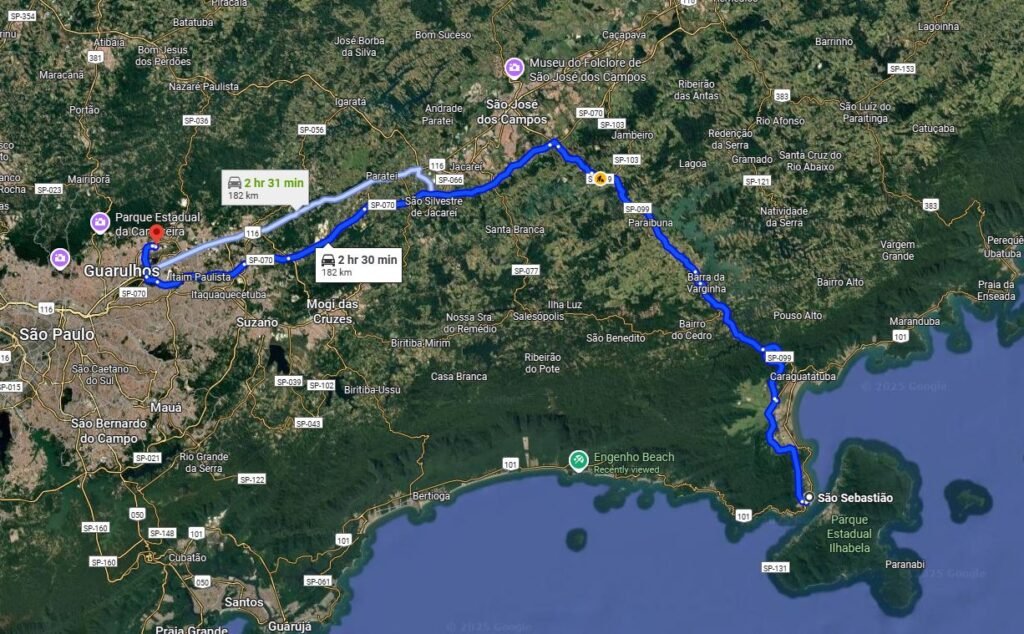
You have three airport options – Guarulhos International, São José dos Campos at approximately 64 kilometers, and Congonhas at approximately 206.9 kilometers.
The Pássaro Marron bus line runs direct service from Guarulhos to Maresias beach, but the journey takes approximately 4 hours and 20 minutes.
Healthcare centers around Hospital de Clínicas de São Sebastião, which handles basic needs but lacks specialized services. This regional hospital serves patients from São Sebastião and the entire Litoral Norte region through Brazil’s SUS public health system, plus private and supplementary health patients. They offer General Medicine, Surgery, Obstetrics and Gynecology, and Pediatrics. However, anything complex requires a trip to São Paulo’s medical facilities. If you develop a serious condition requiring specialized treatment or advanced diagnostics, you face that same 152-kilometer journey to São Paulo’s world-class medical centers.

In terms of safety, it scores decently with armed robberies and home invasions happening, especially in tourist areas, but it’s not widespread. The city is considered the safest on the northern coast of São Paulo, which is the safest state in Brazil. However, most incidents target people perceived as wealthy during peak tourist months of December and January. Theft often involves weapons, and home invasions by armed gangs get reported regularly, with police response sometimes being slow. Crime typically focuses on tourist areas where visitors display expensive jewelry, electronics, or rent luxury accommodations. Additionally, travelers should remain vigilant, as they may encounter unusual scam techniques in Brazil, often designed to exploit tourists’ unawareness.
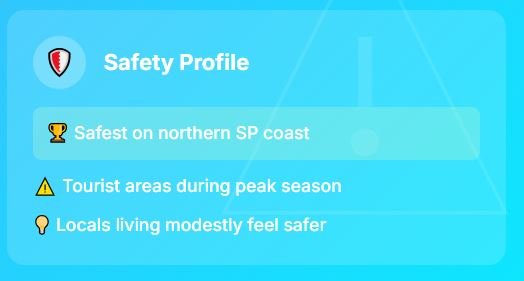
Overall, São Sebastião’s stunning location and affordable living costs are the good side of a place that has some connectivity and airport access challenges.
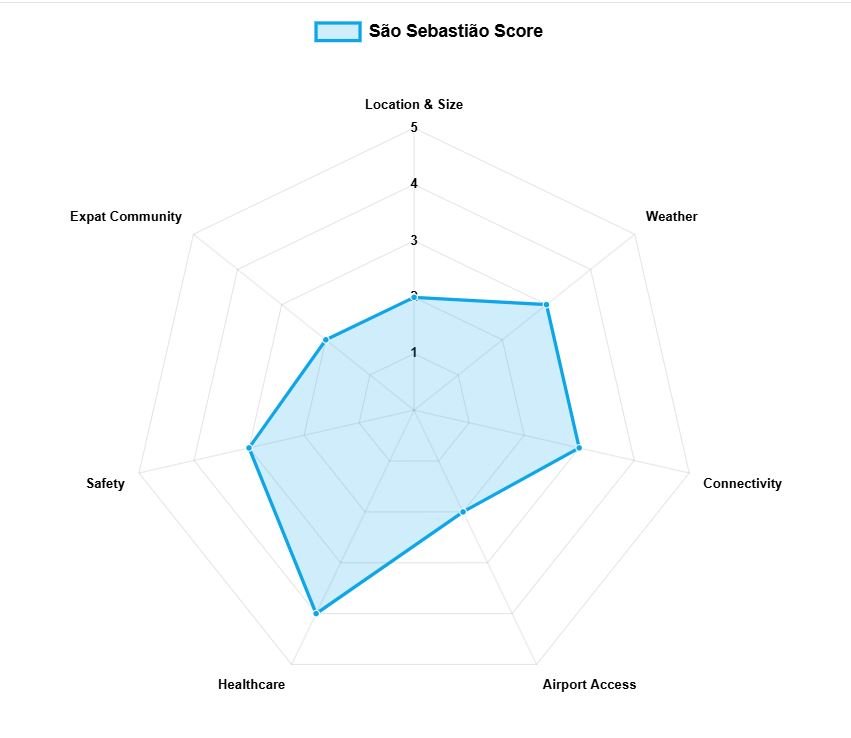
The next city is much larger, and talking about large cities, I am thinking about covering other large cities in South America, since I am South American myself, but I need your help to decide which one: Tell me in the comment section which large cities you would be interested in knowing more about.
Joinville
Joinville blends German efficiency with Brazilian friendliness. Walk through the city center, and you’ll notice the difference immediately. Street signs appear in perfect condition. Public spaces stay clean and well-maintained. Local businesses operate efficiently, and the community is known for being welcoming from day one.
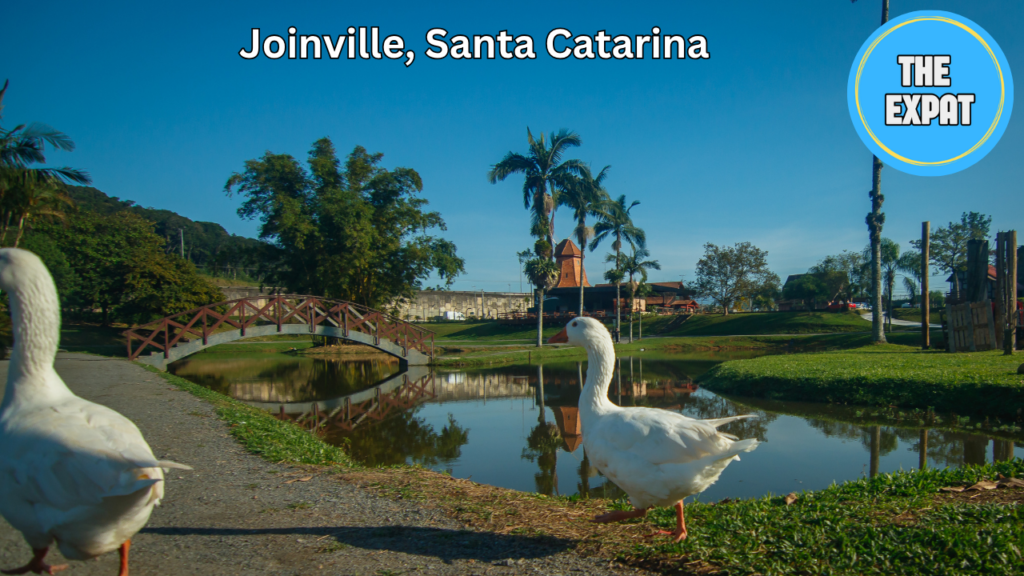
Santa Catarina’s largest city, with a population of 654,888 residents, was built by German immigrants who brought their work ethic and love of order starting in 1851. You’ll find bilingual schools that support expat families.
The German-Brazilian cultural blend creates something unique.
Santa Catarina is the second safest state in Brazil, rivaling São Paulo for the lowest crime rates in the country. This safety record extends throughout Joinville, where violent crime stays remarkably low compared to other major Brazilian cities. The German influence shows up in how locals approach community safety – neighborhood watch groups, well-lit streets, and a general culture of looking out for each other. For safety, Joinville is a solid choice.
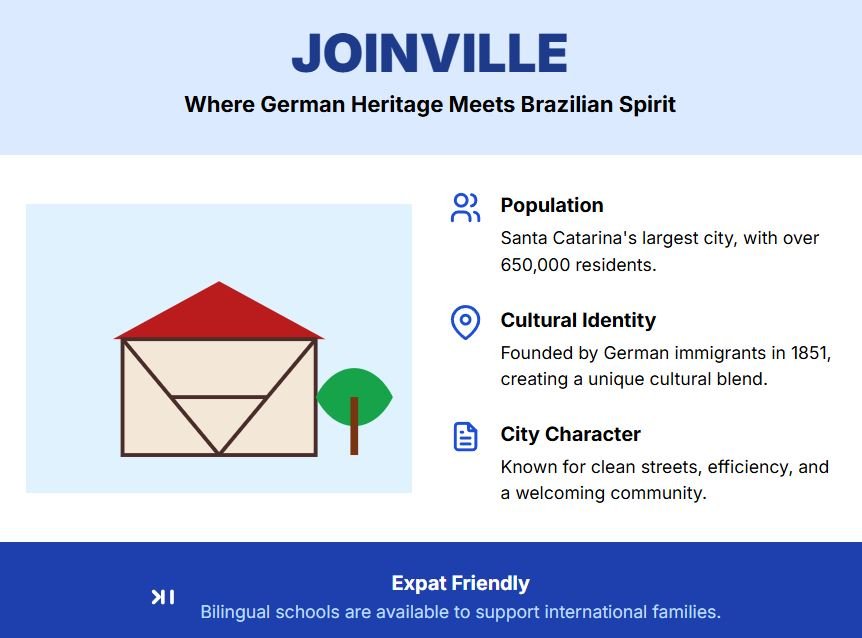
Temperatures have very warm summers and cool winters. If there is one of the 7 factors where Joinville didn’t make it very well is the weather, and a local explained to us the reason the weather there might be complicated.
“Welcome to an excellent city with an unpleasant climate – there are basically two climates, infernal heat and unstoppable rain, and both can occur simultaneously; the worst case I experienced was close to 90 days of uninterrupted rain, yes that’s right, 24 hours of rain for almost three months, I didn’t even know that was possible.”
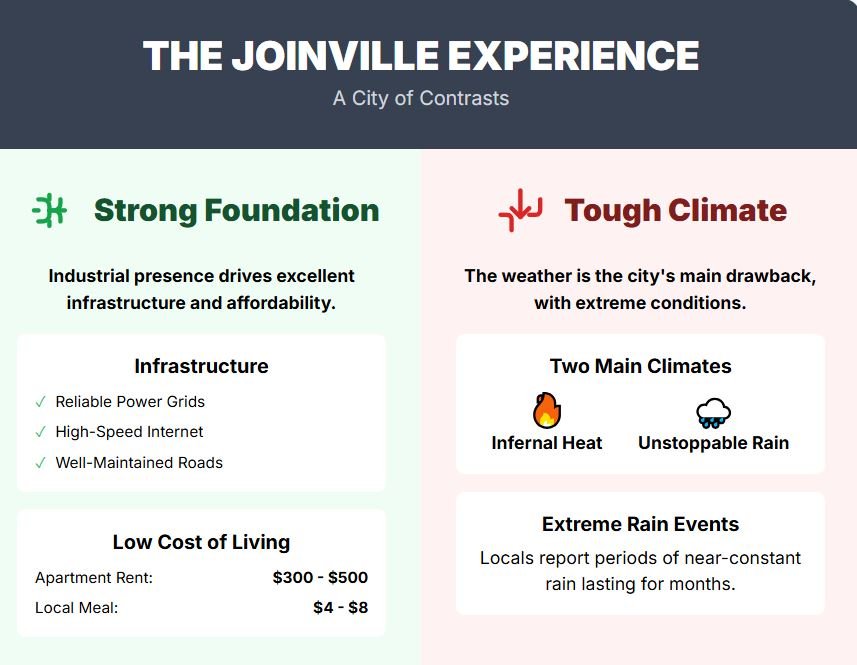
On the other hand, the industrial presence means excellent infrastructure. Multinational corporations in automotive and tech have invested heavily here, creating reliable power grids, fast internet, and well-maintained roads. Your $1000 monthly budget benefits from this industrial economy, with lower costs than tourist-focused cities. A nice apartment runs $300 to $500 per month. Local restaurants serve meals for $4 to $8. Transportation costs stay minimal due to efficient public transit systems. You’re paying prices geared toward residents in a city with international-quality infrastructure.
Joinville has its own airport, Lauro Carneiro de Loyola Airport, with multiple daily flights to São Paulo, making international travel much easier than coastal alternatives. Direct flights to São Paulo’s Guarulhos International Airport take just 1 hour and 10 minutes.
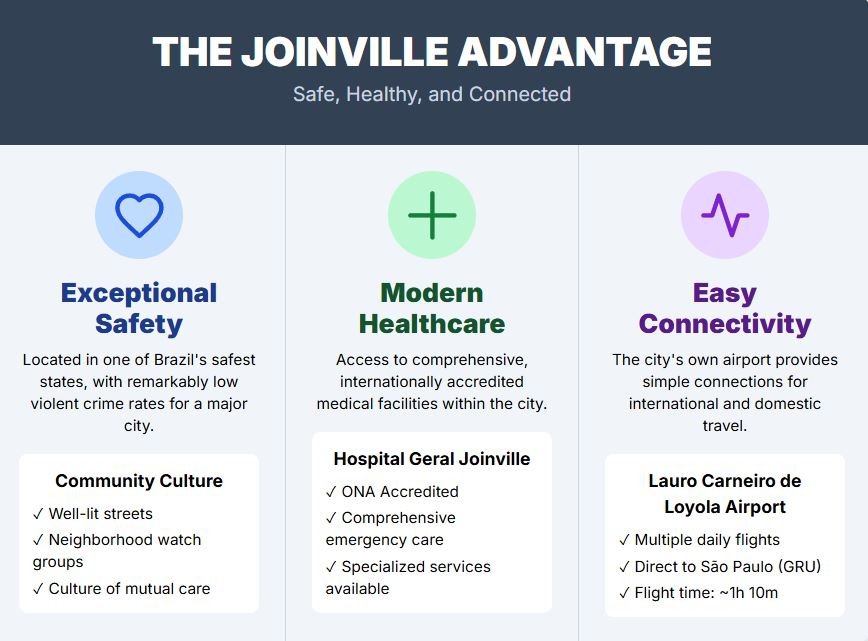
Hospital Geral Joinville provides healthcare that meets international standards, backed by the Hapvida NotreDame Intermédica group. The facility opened in April 2019 with 141 beds and 120 doctors on staff. The hospital earned ONA Brazil accreditation, meaning they meet strict quality standards. They offer comprehensive emergency care for adults and children, plus specialized services that handle complex medical conditions.
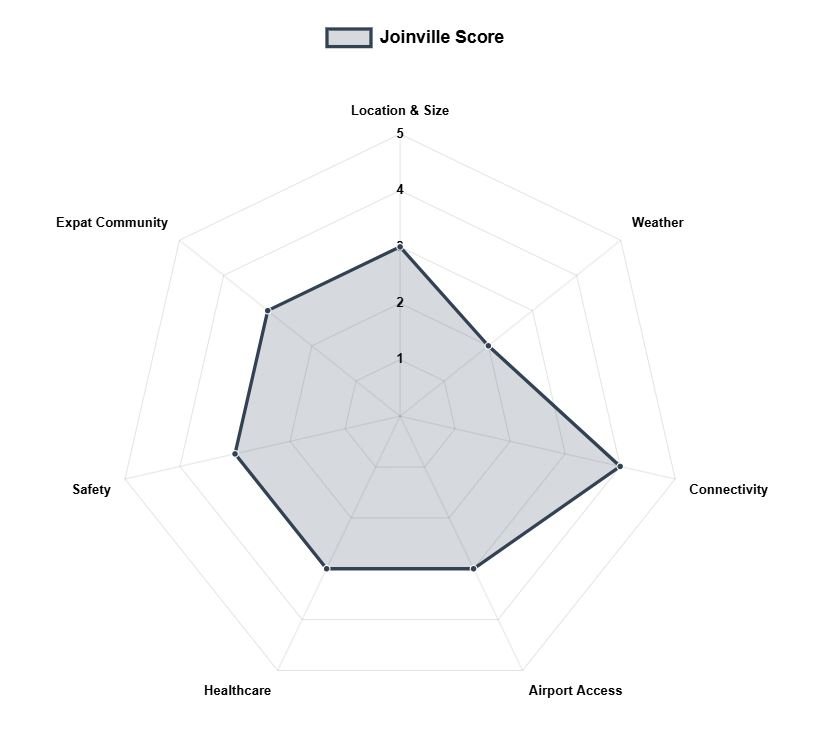
The wet weather throughout the year and some neighborhood safety concerns keep Joinville at fourth place, but it’s still a solid choice for retirees who want modern city amenities. January brings the heaviest rainfall with 8.1 inches on average.
São José dos Campos

São José dos Campos, Brazil’s aerospace and technology hub, is one of its best cities for retirement. Unlike many tech hubs known for high costs and urban chaos, São José dos Campos offers a high quality of life with affordable prices. São José dos Campos ranks as the 7th largest city in São Paulo State with a population of 737,000 residents, but most foreigners have never heard of it.
This city is home to Brazil’s aerospace industry, telecommunications giants, and defense contractors that shape the country’s technology sector. Embraer, the third-largest aircraft manufacturer in the world, has its headquarters here. Major telecommunications companies like Panasonic, Ericsson, and Johnson Controls chose this city for their Brazilian operations. The National Institute for Space Research operates from there.
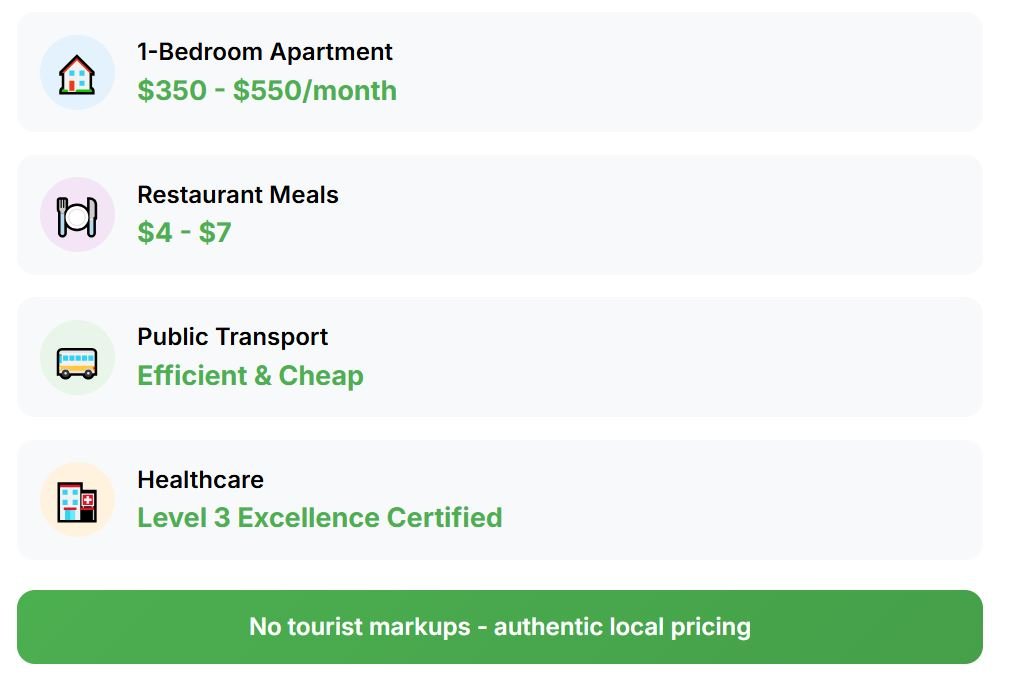
This industrial presence has led to significant investments in infrastructure and safety. When multinational corporations invest billions in a city, they demand reliable power grids, fast internet, well-maintained roads, and effective security. The government responds by upgrading everything to international standards. Residents enjoy high-quality public services while daily living costs remain affordable.
Temperatures stay comfortable between 12.2°C and 30.6°C, with clear winters that locals call perfect weather. The city experiences distinct seasons. Winters bring mostly clear skies and comfortable temperatures that make outdoor activities enjoyable from June through August, offering months of ideal weather. Summer temperatures reach the upper 30s (around 30–31°C) with higher humidity, but the wet season provides natural cooling that prevents oppressive heat. The weather rarely drops below 8.9°C or exceeds 34.4°C, keeping you within a pleasant range throughout the year.
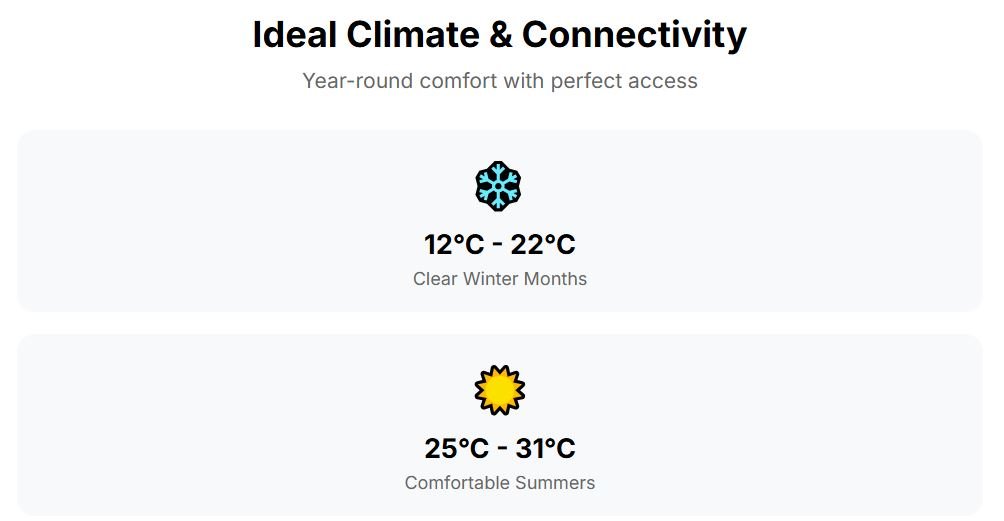
Your $1000 monthly budget works harder here because it’s not a tourist destination – you pay prices geared toward residents. A one-bedroom apartment costs $350 to $550 per month. Restaurant meals run $4 to $7. Transportation stays cheap because the city built efficient public systems to serve the working population. You won’t find tourist markups or inflated costs that plague beach cities.

The Dutra highway gives you exceptional connectivity to São Paulo and Rio de Janeiro by car, turning two of Brazil’s major cities into day-trip destinations. This highway serves as the main artery between Brazil’s economic centers and is well-maintained. Additional highways like Ayrton Senna and Carvalho Pinto provide alternative routes to São Paulo. The Tamoios road takes you to the North Coast beaches at Caraguatatuba and Ubatuba in 84 kilometers.
This is what a local told us:
“Despite the rent, it is the greenest city I’ve ever seen, and I love living here. Mainly because it’s close to everything, extremely well-located.”
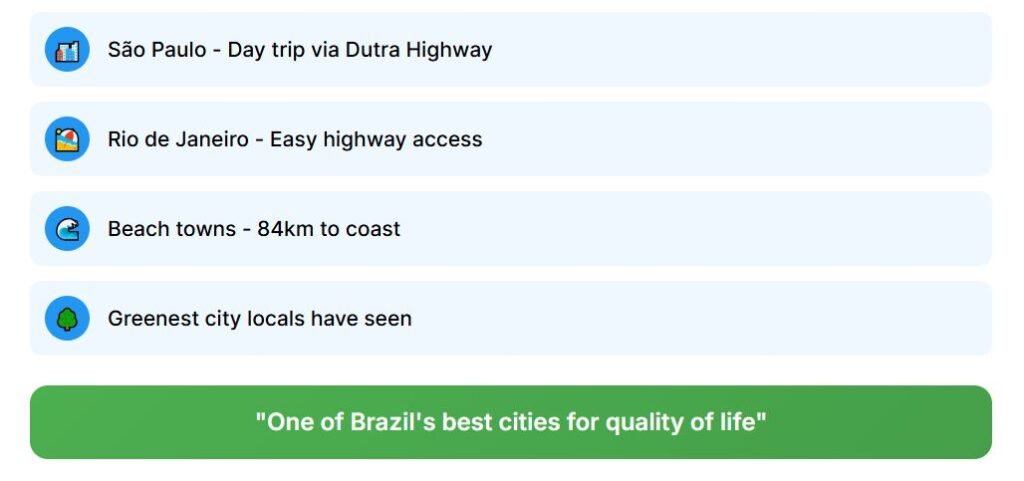
Hospital Estadual de São José dos Campos earned the highest level of national quality certification – healthcare you can trust. The facility achieved “Acreditação com Excelência – nível 3 da Organização Nacional de Acreditação (ONA)” in May 2021, placing it among the top public hospitals in São Paulo state.
Crime rates stay low compared to major Brazilian cities, though some neighborhoods like Campo dos Alemães and Banhado require normal urban caution, especially at night. Its safety profile is strong.

The next city is famous for being a favourite among retirees and… corrupt politicians. But before I reveal it, I have some really good news. FREE FOR A LIMITED TIME: Grab your Expat Wealth & Lifestyle Compass ($108 value) today! Includes our 74-page guide of Affordable European Cities, our Zero-Tax countries report, and our expat checklist. https://bit.ly/ExpatWealthLifestyleCompass Join us here before this offer ends.
Atibaia
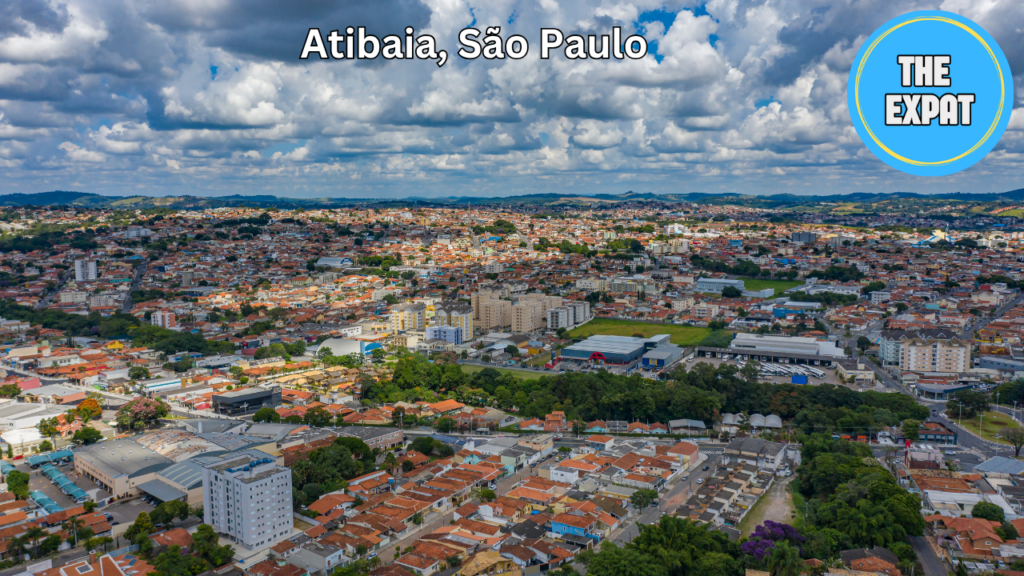
Brazil’s second-safest city with over 100,000 people is just 67 kilometers from Brazil’s largest airport. Atibaia proves that safety and proximity to international travel can coexist in Brazil.
This city sits perfectly positioned between mountain ranges in São Paulo’s interior, close enough to Guarulhos International Airport that you can catch a morning flight without spending the night in São Paulo.
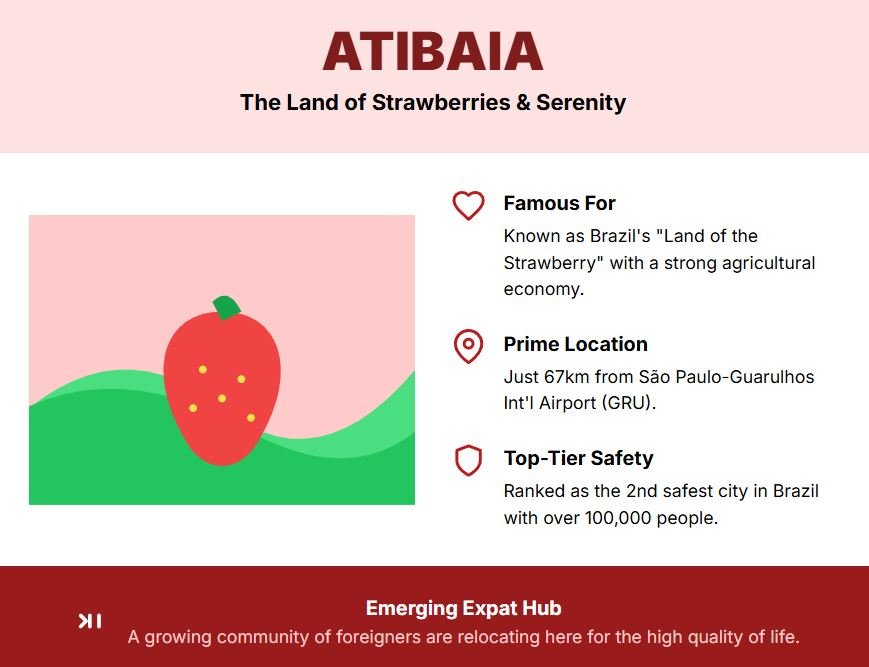
Atibaia calls itself the “Land of the Strawberry.” This agricultural focus creates an economy based on farming rather than tourism or heavy industry. Local strawberry festivals draw visitors from across the region, but the city never developed the tourist infrastructure that drives up prices. You get authentic Brazilian culture without paying tourist prices.
Here’s a curiosity: Atibaia became famous because some politicians, using allegedly corrupt schemes, bought properties in this pleasant city to live. These politicians could have chosen anywhere in Brazil with their stolen money, but they picked Atibaia.

The city has achieved an impressive safety record, becoming the safest city in São Paulo state. This is the result of public investment in security measures, including monitoring cameras and increased security personnel. The smaller urban area makes greater monitoring possible compared to massive cities like São Paulo or Rio de Janeiro..
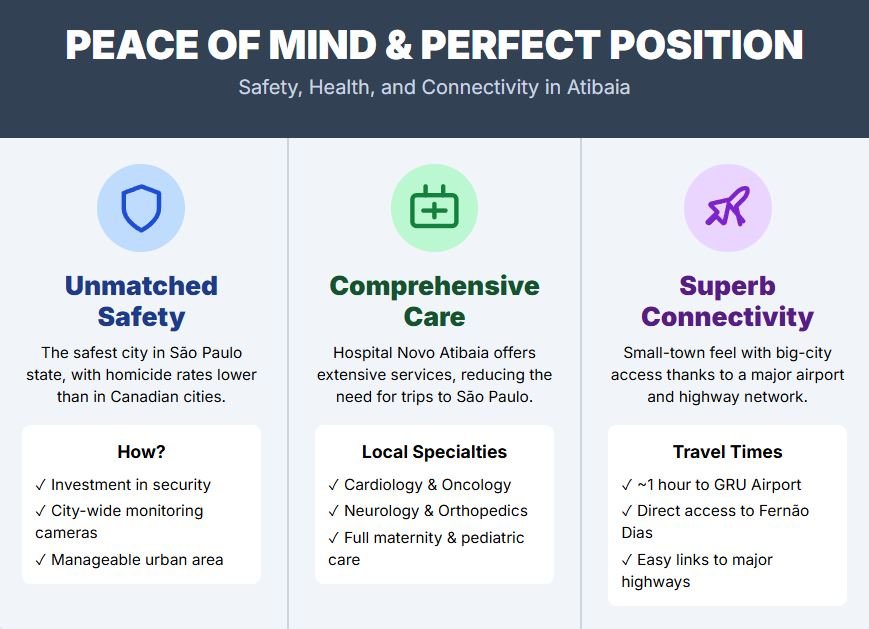
Violent crime rates drop so low they barely register on national statistics. The homicide rate stays lower than cities in Canada. Walking through Atibaia’s streets at night feels remarkably safe. This safety record attracts families and retirees who want peace of mind as their top priority.
The weather gives you warm summers up to 28°C and cool winters down to 12°C. The climate rarely drops below 8°C or exceeds 34°C, ensuring a pleasant climate year-round. Summers can get muggy with frequent rain, but winters stay mostly clear with pleasant temperatures perfect for outdoor activities.
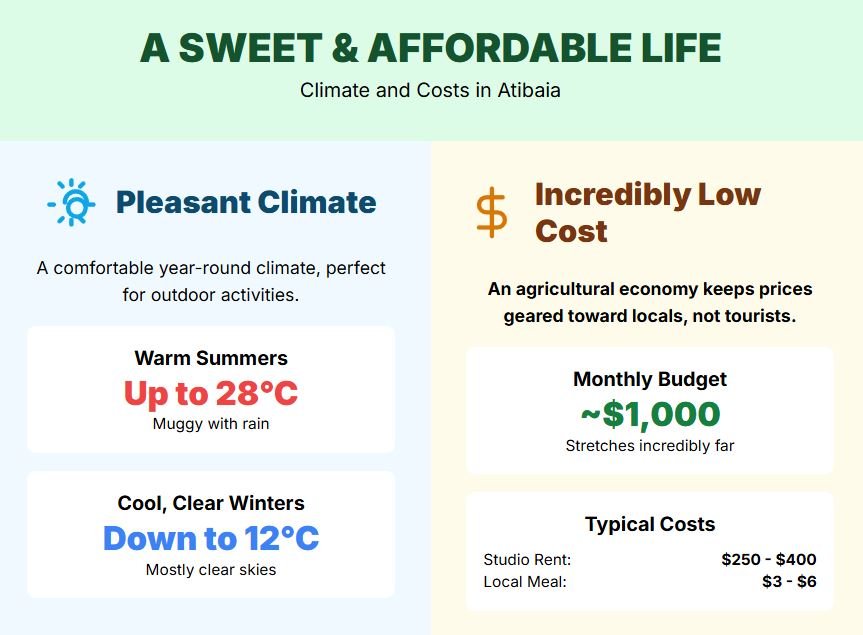
Your $1000 monthly budget stretches incredibly far because Atibaia focuses on agriculture. Agricultural economies keep housing costs low, restaurant prices reasonable, and daily expenses minimal. A studio costs from $250 to $400 per month. Local meals cost $3 to $6. Transportation stays cheap because the city built systems for residents. You pay what locals pay because you become part of the community.
The location is perfect – small-town tranquility with São Paulo-Guarulhos International Airport just 67 kilometers away. The Fernão Dias Highway connects directly to São Paulo and Belo Horizonte, while Rodovia Dom Pedro I links to the Anhanguera and Presidente Dutra highways.

This highway network gives you outstanding accessibility throughout São Paulo state and beyond. You can reach the airport in about an hour during normal traffic conditions.
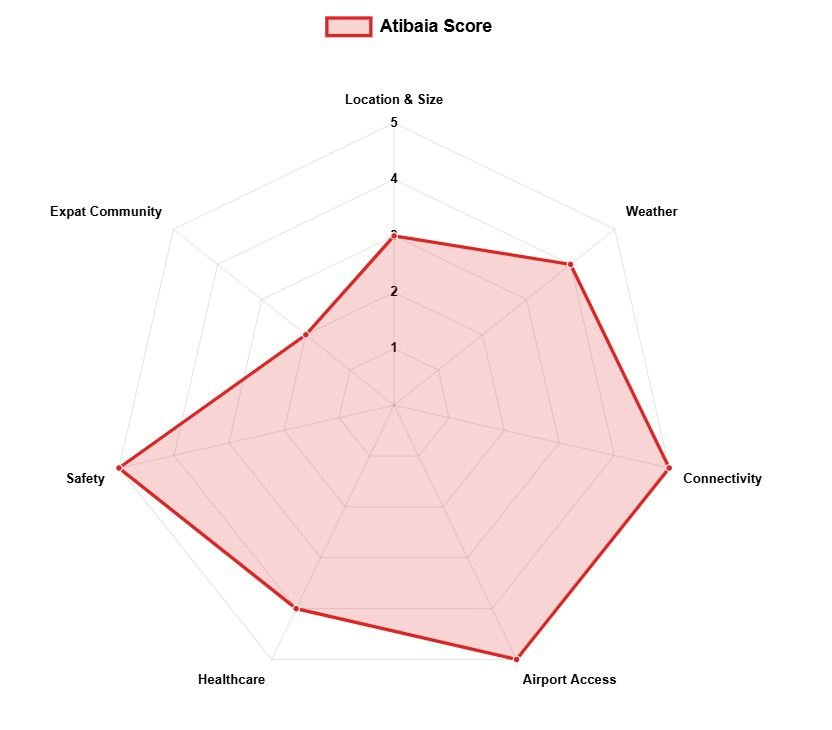
Florianópolis
Florianópolis, the capital of Santa Catarina, boasts Brazil’s highest Human Development Index (HDI) at 0.847 among all capitals, signifying an exceptional quality of life. This city offers a lifestyle comparable to European cities but at a fraction of the cost, combining excellent infrastructure, reliable services, and reasonable prices.
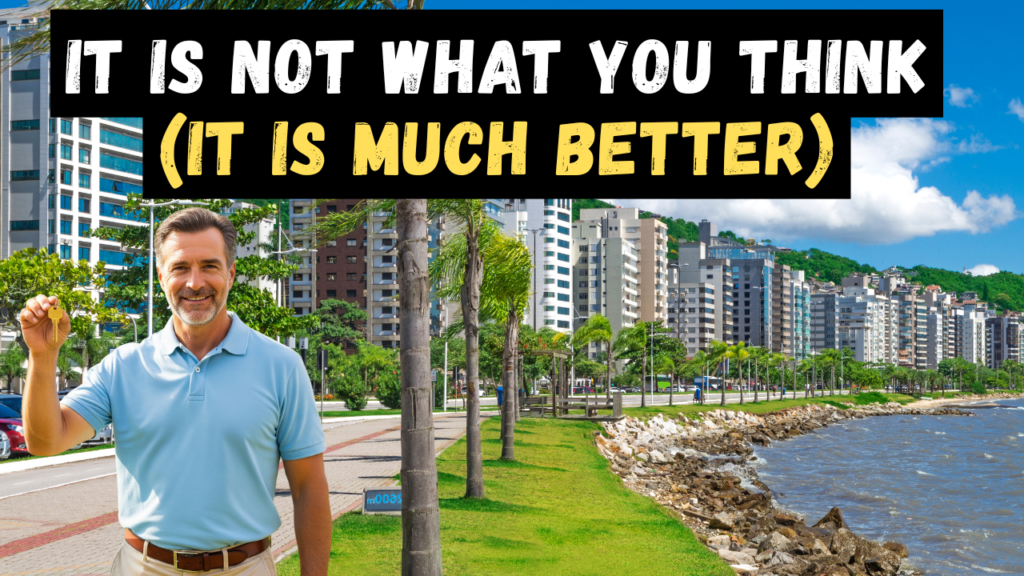
Known as “Magic Island,” Florianópolis is home to 42 beaches, yet it’s a modern city with a population of 576,000. Just minutes inland, you’ll find shopping centers, universities, technology companies, and cultural venues. The island’s geography helps preserve its unique character.
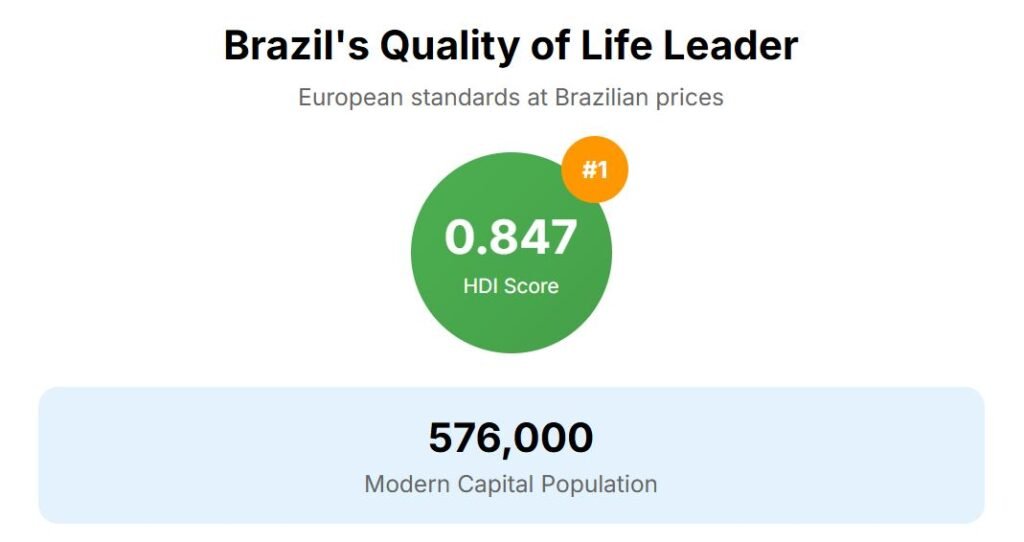
The subtropical climate provides warm summers with comfortable ocean breezes and mild winters. Temperatures range from 13.3°C to 30°C, with ocean winds offering natural cooling during warmer months and a temperate climate preventing extreme weather.
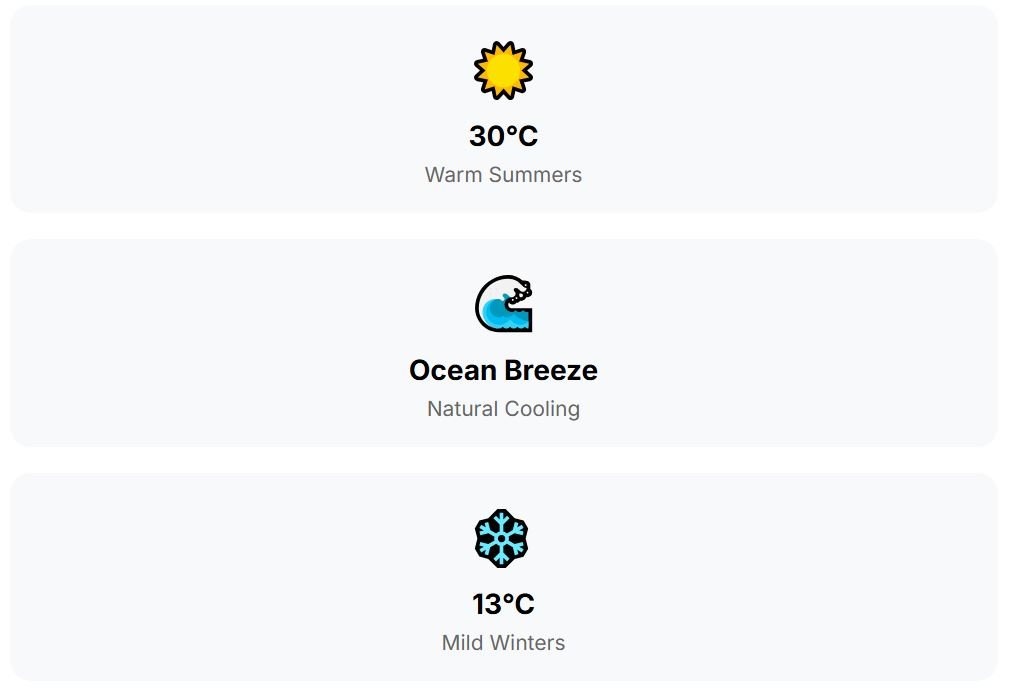
A monthly budget of $1,000 stretches far in Florianópolis. Housing ranges from $400 to $650 per month for apartments, and meals at local restaurants cost $5 to $9. Affordable public transportation further enhances the city’s value. This affordability is partly due to the city attracting more professionals and retirees than mass tourism, which helps stabilize prices.
Florianópolis International Airport (FLN) is just 16 kilometers from the city center, offering frequent direct flights to São Paulo/Guarulhos International Airport (GRU), a major international hub. This makes travel to the US, UK, Australia, or Canada smooth for expats.
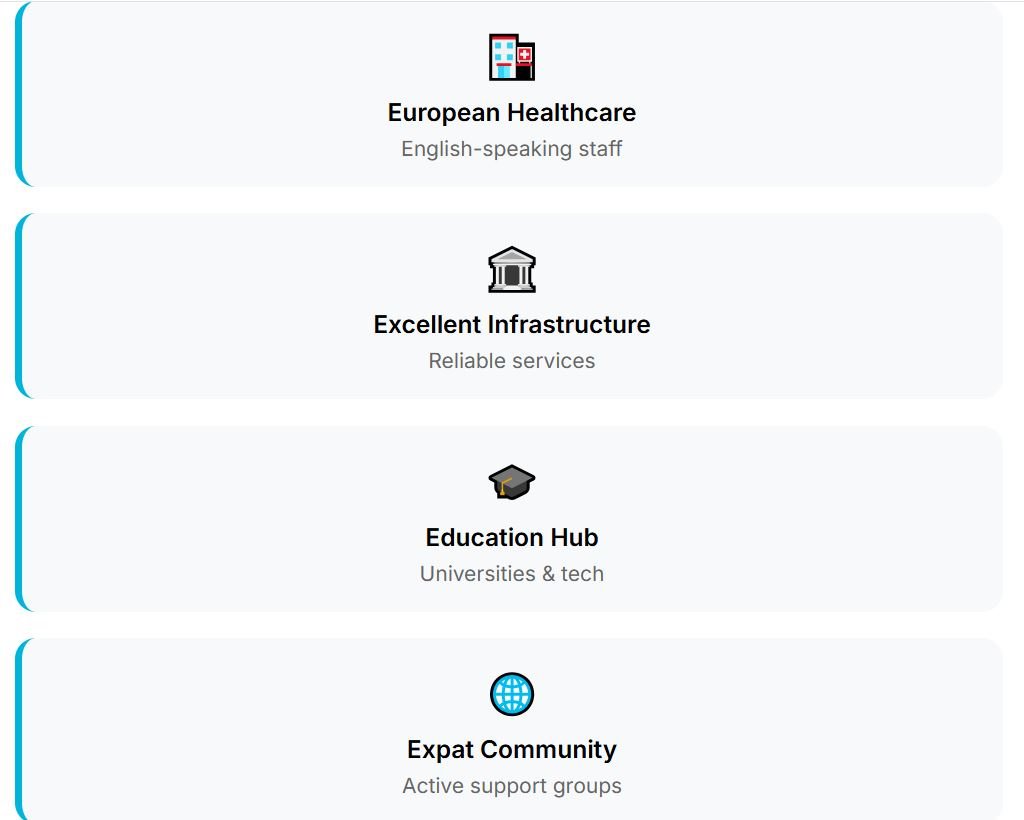
The city’s private healthcare system is on par with European standards, featuring modern technology and English-speaking staff.
Florianópolis maintains remarkably low crime rates for a capital city, with a homicide rate of 9.9 per 100,000, the second lowest among Brazilian state capitals. The city offers a highly secure environment for residents and visitors.
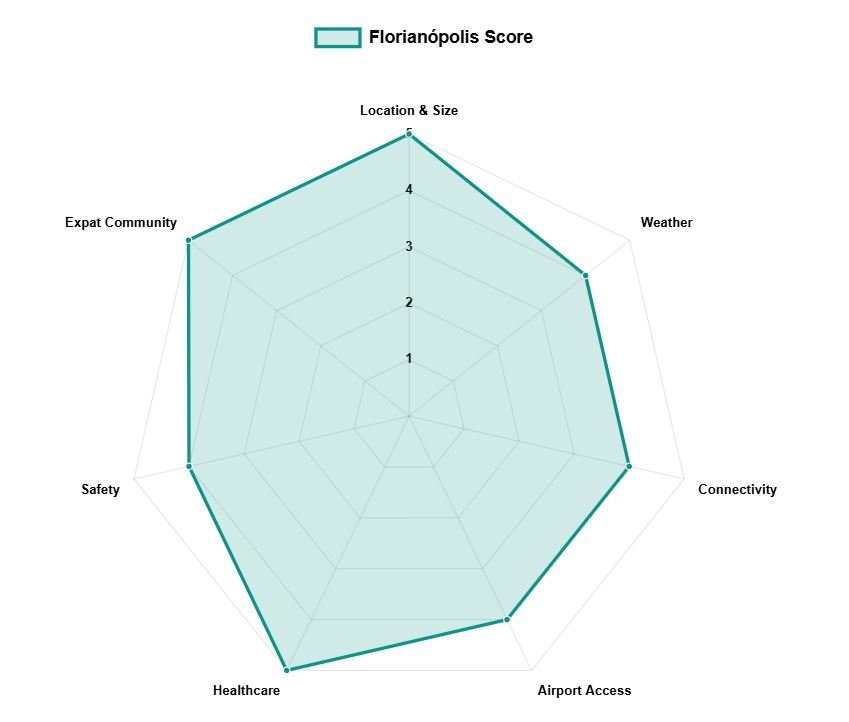
The city also has a vibrant expat community and dedicated online forums like “Gringoes in Floripa” and “Floripa Digital Nomads.” With its combination of safety, connectivity, high-quality healthcare, affordability, and a supportive community, Florianópolis stands out as a top-tier all-around retirement destination in Brazil..
But… there is so much more about Florianópolis.
Levi Borba is the founder of expatriateconsultancy.com, creator of the channel The Expat, and best-selling author. You can find him on X here. Some of the links above might be affiliated links, meaning the author earns a small commission if you make a purchase.
